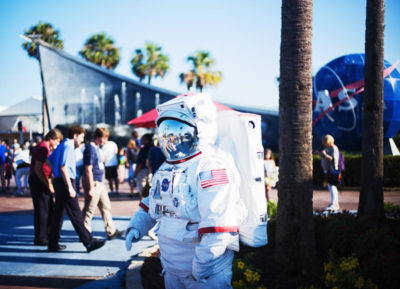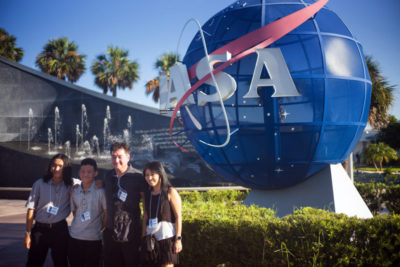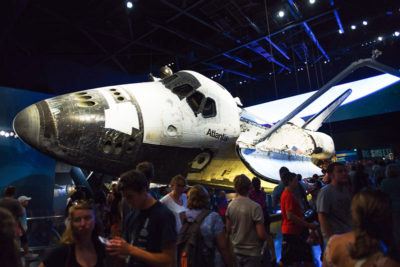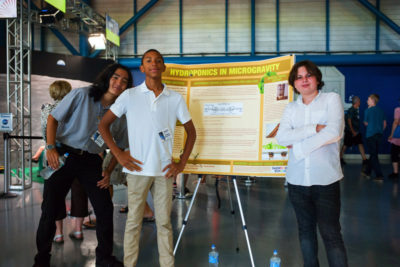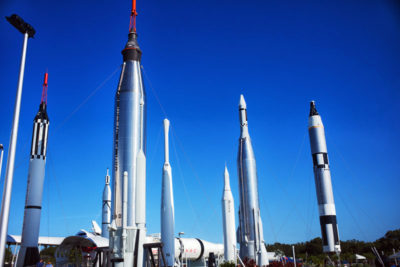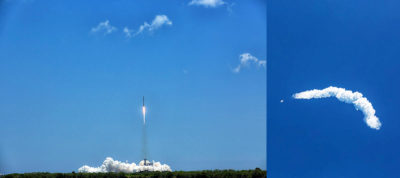If you’ve been following the Oakwood Space Program since its launch on campus in the fall of 2016 and tracking the story’s trajectory as it has continued its path towards space during the winter months, be sure not to miss this installment, which follows an experiment designed by three Oakwood students to its current location: orbiting approximately 240 miles above the Earth’s surface on the International Space Station.
Oakwood in Orbit
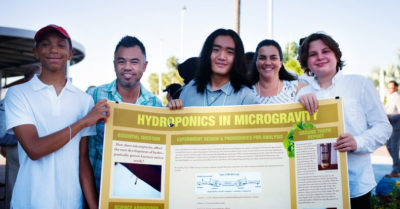
During the 2016-2017 school year, Oakwood students in grades 5-12 were given an educational opportunity that was truly out of this world. Selected by the Student Spaceflight Experiments Program (SSEP) as one of 21 communities to participate in an experiential learning experiment design competition, Oakwood teachers and scientists embarked on a mission that would, by December, yield three finalist science experiments to submit to the SSEP Step 2 Review Board—a national team of professional researchers and distinguished STEM educators— in Washington D.C., tasked with the job of then selecting just one representative Oakwood experiment. The students were told from the beginning that the chosen experiment would ultimately participate in the planned culmination of this program: the launch of the experiment into low Earth orbit aboard the International Space Station in the summer of 2017 to be conducted by astronaut-scientists in the condition of microgravity.
In January, when Finn, Koa, and Noah received the news that their group’s scientific question, “How does microgravity affect the root development of hydroponically grown romaine lettuce seeds?” had been chosen and that their experiment was slated to boldly go where no Gorilla had gone before … the reality of their work actually orbiting the Earth must have seemed a distant one, both literally and figuratively!
After much preparation and waiting, on August 13—nearly a year after Oakwood students first learned about our school’s participation in the Student Spaceflight Experiments Program—a delegation of the finalist students, their families, and some of their teachers watched live on site as SpaceX CRS-12 launched from Kennedy Space Center in Cape Canaveral. Among the payload headed up to the ISS was their original experiment titled “Hydroponics in Microgravity,” designed in their eighth grade general science course. Also present in the payload was one of the most powerful supercomputers ever built and 21 other school experiments from SSEP.
After its arrival at the ISS, their experiment was activated at 4:00 am EST on September 4, beginning a two week experiment in microgravity that is being duplicated with a control experiment in full gravity here on Earth. The return payload is scheduled to splash down in the Pacific Ocean on Sunday, September 17 and a few days later, we will receive the experiment back after its long journey, at which point the students can conduct a final analysis. For up to the minute updates, please follow this link to the Mission 11 Experiment Log with our community’s experiment listed under North Hollywood, “Hydroponics in Microgravity.”
In the words of Phu Tranchi, Oakwood’s Director of Experiential Learning, “The reality and magnitude of their endeavor is really taking hold and the boys (and their teachers!) have been filled with awe since watching the rocket launch and now realizing that their experiment has been going on in space and will be returned to Earth.” All of us in the Oakwood community are equally as excited about this incredible scientific journey, and we promise yet another update once the boys have had a chance to analyze their data!
Photos by Christopher Mack
The Student Spaceflight Experiments Program [or SSEP] is a program of the National Center for Earth and Space Science Education (NCESSE) in the U.S. and the Arthur C. Clarke Institute for Space Education internationally. It is enabled through a strategic partnership with DreamUp PBC and NanoRacks LLC, which are working with NASA under a Space Act Agreement as part of the utilization of the International Space Station as a National Laboratory. SSEP is the first pre-college STEM education program that is both a U.S. national initiative and implemented as an on-orbit commercial space venture.


